Abstract
The maintenance of chlorophyll in darkened first leaves of oats was used as a bioassay for cytokinins in pea (Pisum sativum) roots. No cytokinin was found (in contrast with earlier reports on sunflower roots); however, the extracts contained two or more substances antagonistic to cytokinin, i. e., promoting the yellowing in this test. Because the most active of these appeared to be an amino acid, individual amino acids were examined for their ability to modify the greening reaction. As a result, l-serine was found to have these properties. It promotes yellowing whether the greening agent is kinetin, indoleacetic acid, or adenine; it is, therefore, not functioning as a specific cytokinin antagonist. Its action is due to promoting proteolysis. Its d-isomer is inactive. l-Arginine, which alone does not cause chlorophyll retention and only weakly inhibits proteolysis, strongly antagonizes the action of l-serine, and thus prevents the yellowing; this effect is specific, and the only other effective serine antagonist found, although much weaker, is l-threonine. The action of arginine is not due to its preventing serine uptake, but rather the action parallels the serine-arginine antagonism previously described for nitrate reductase induction. A novel interpretation of the effect of amino acids on this process is therefore put forward. In studies of the RNase in darkened oat leaves, serine was found to have no effect; however, kinetin strongly inhibits the normal rise in the level of RNase which occurs in the isolated leaf. Kinetin also maintains the integrity of the cell membranes. A variety of evidence leads to the conclusion that the primary action of kinetin on the leaf is to inhibit proteolysis, rather than to promote protein synthesis.
Full text
PDF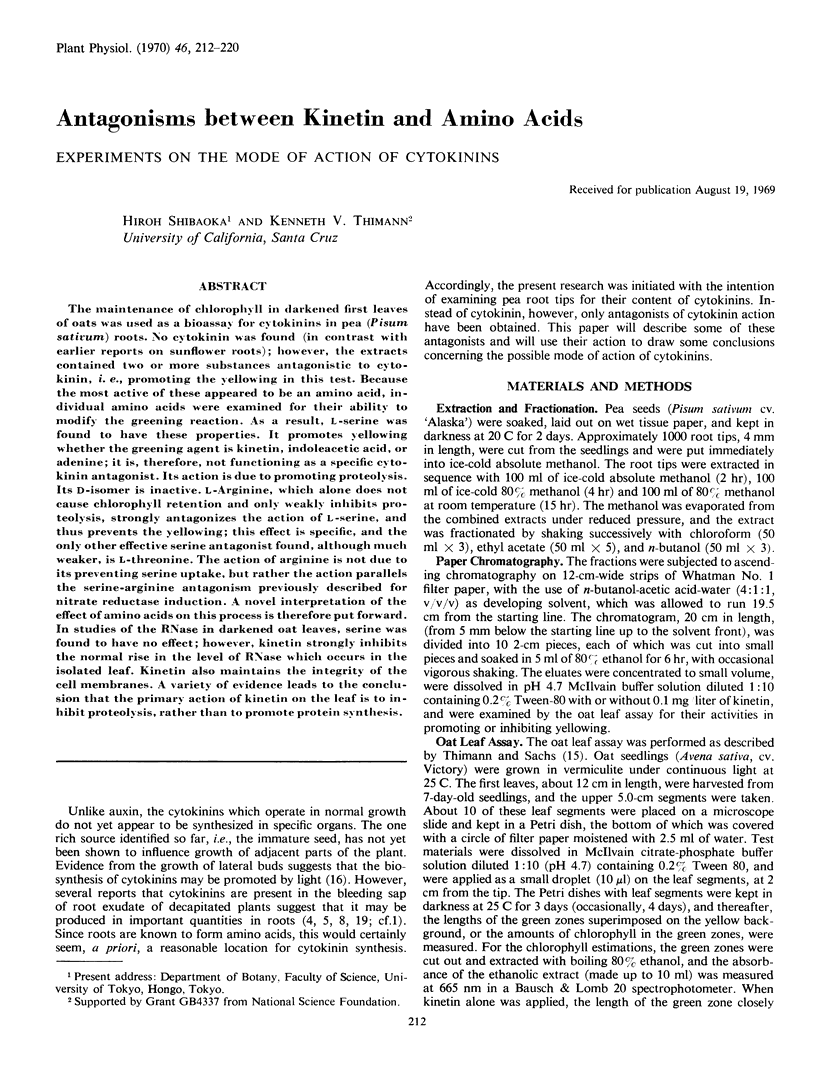
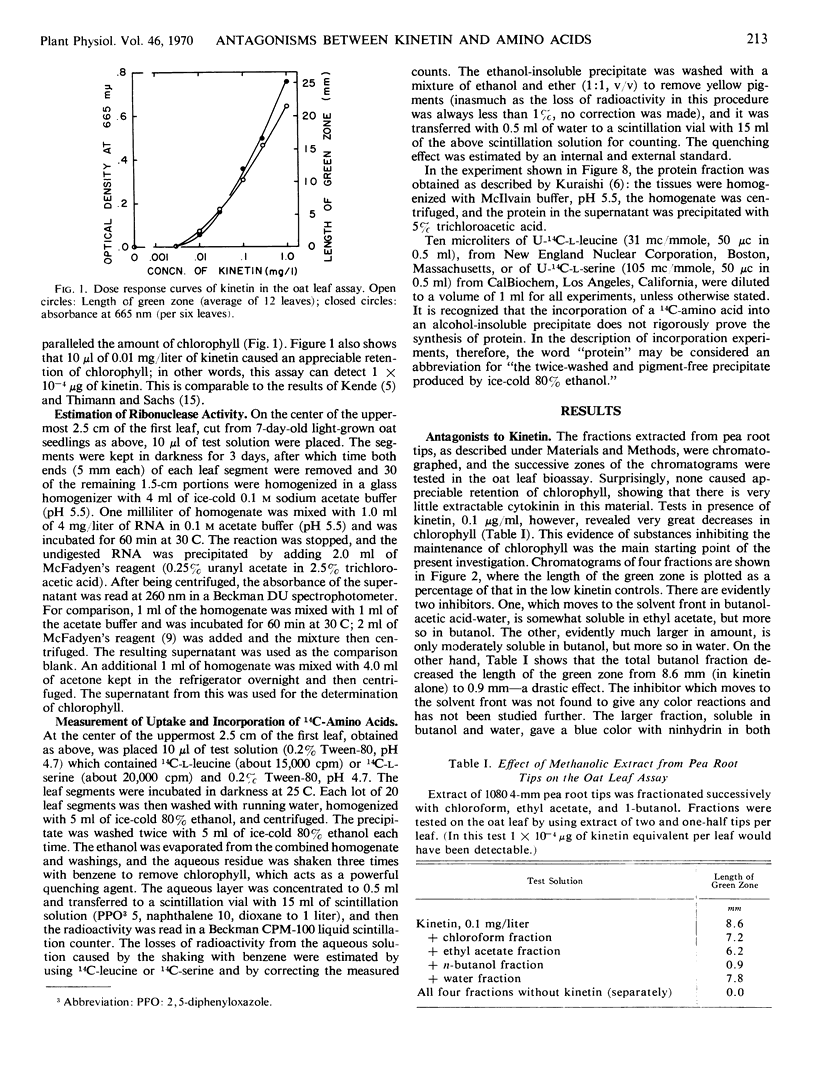
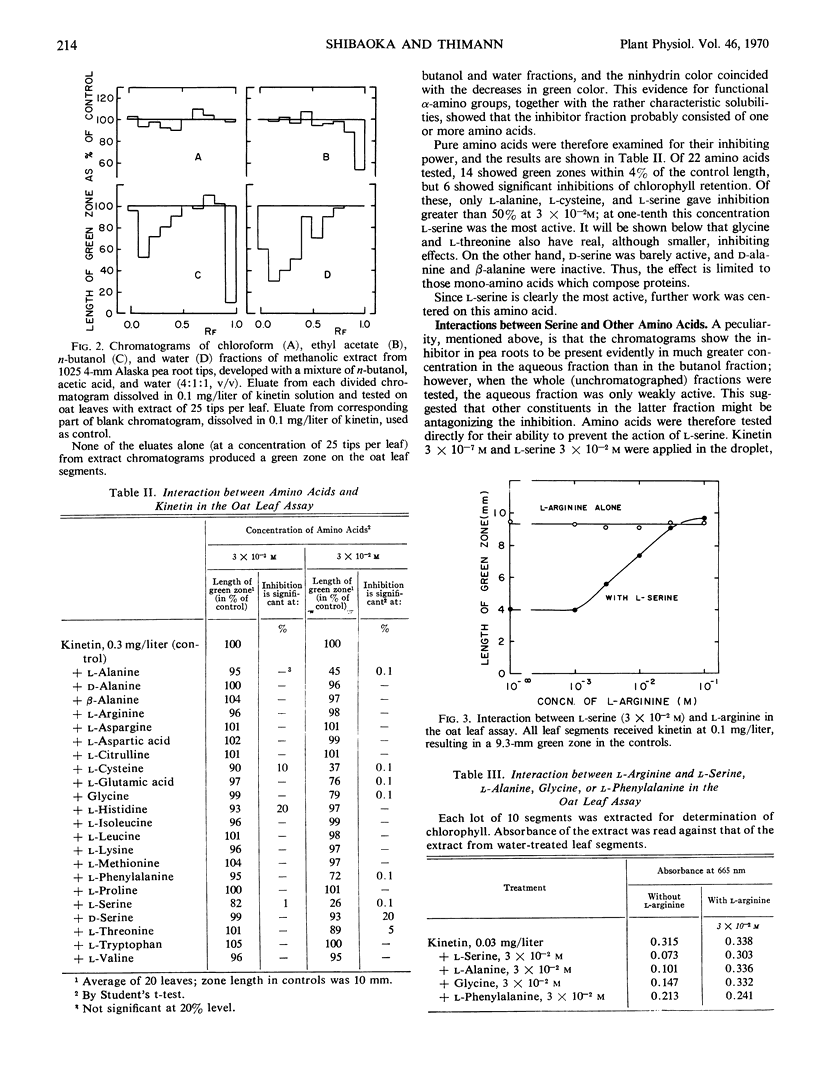
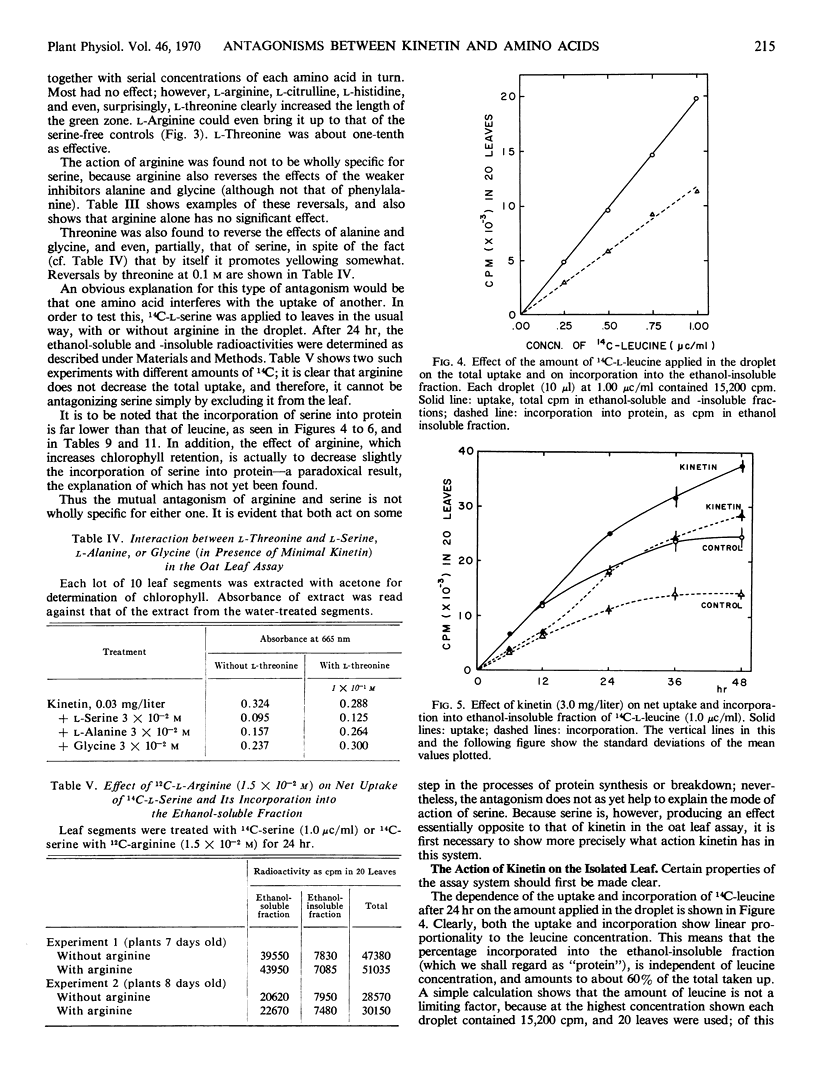
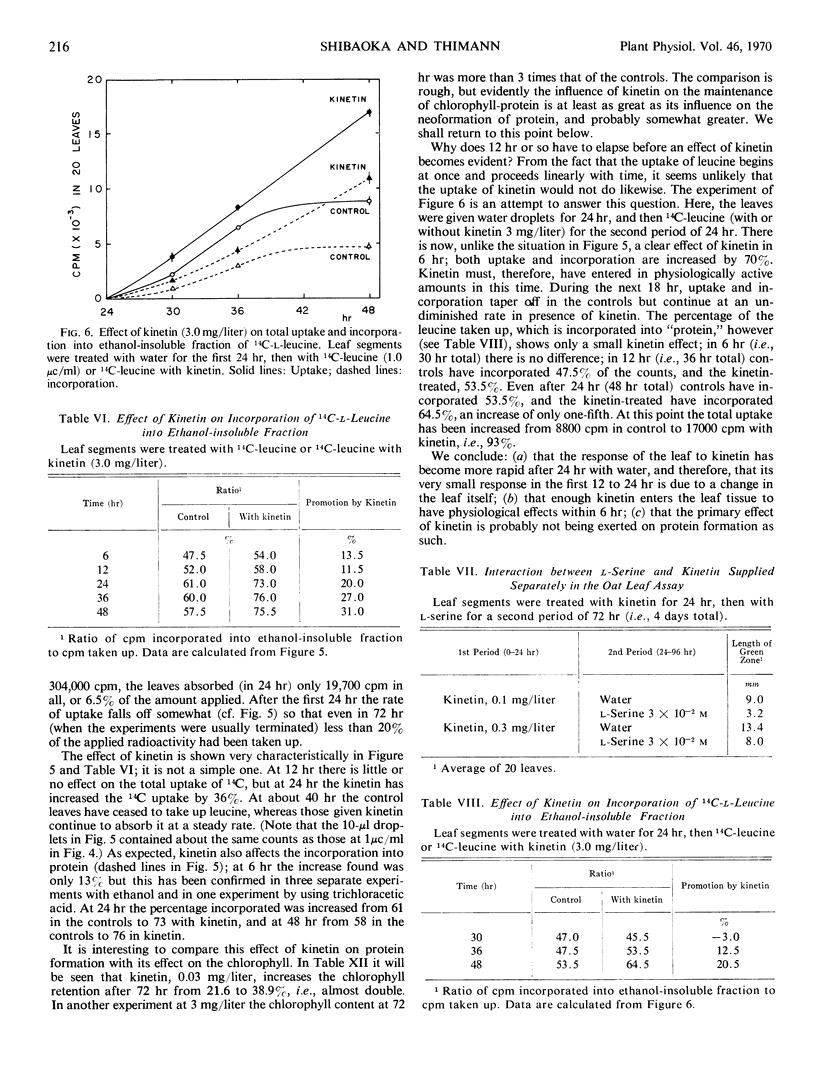
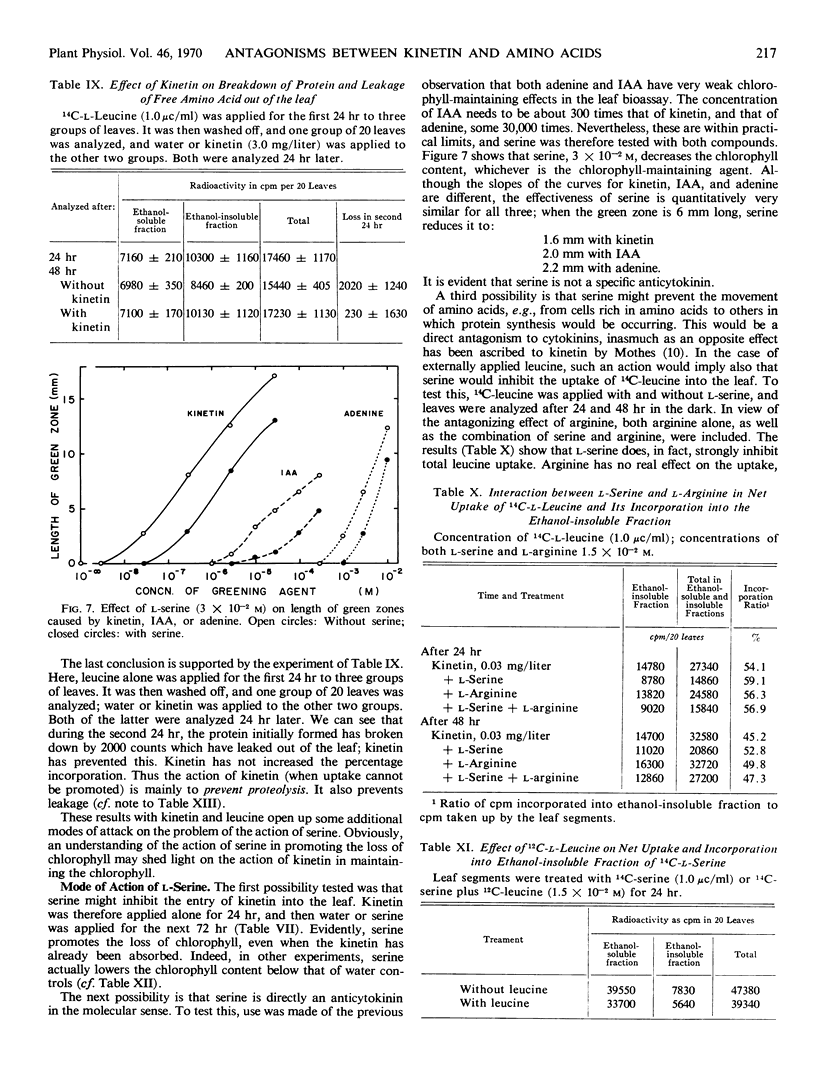
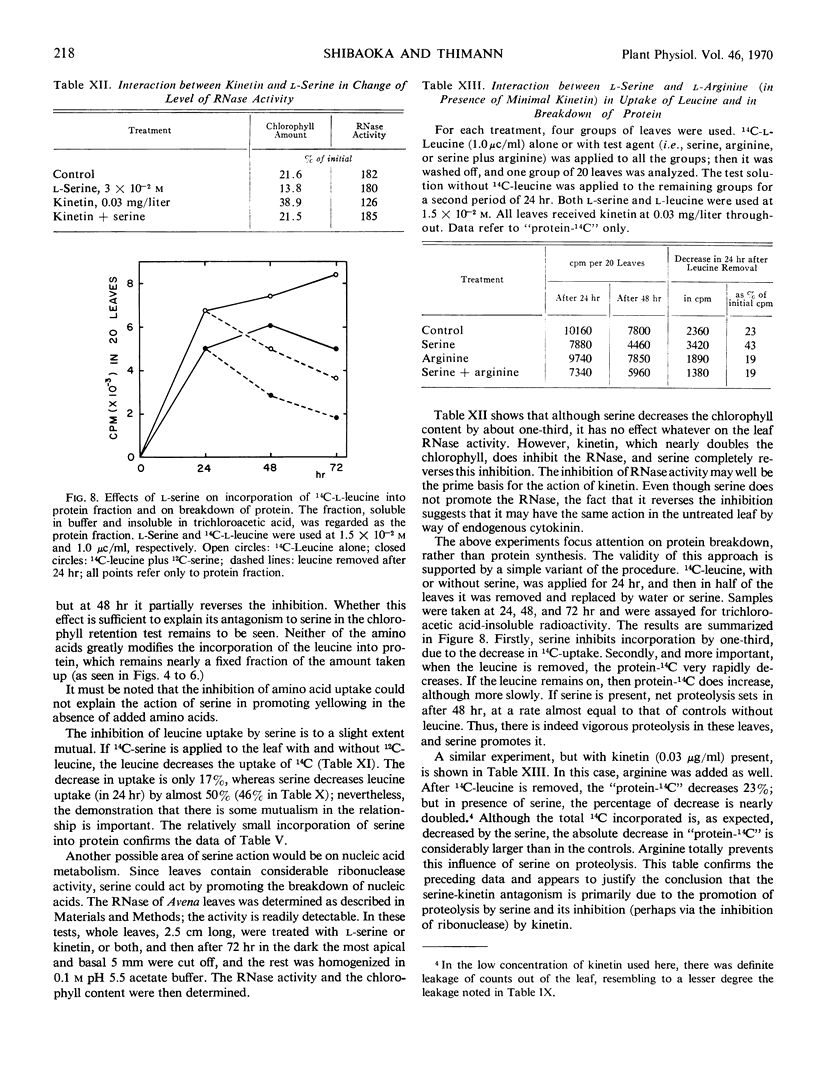
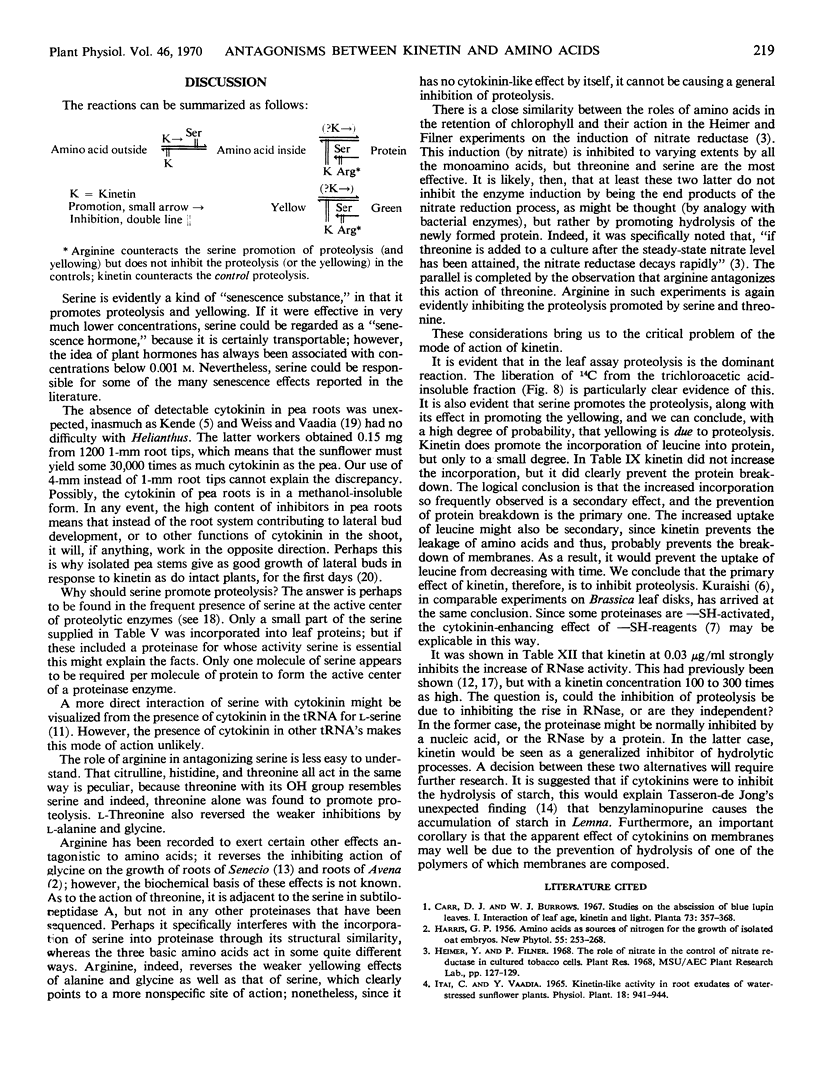
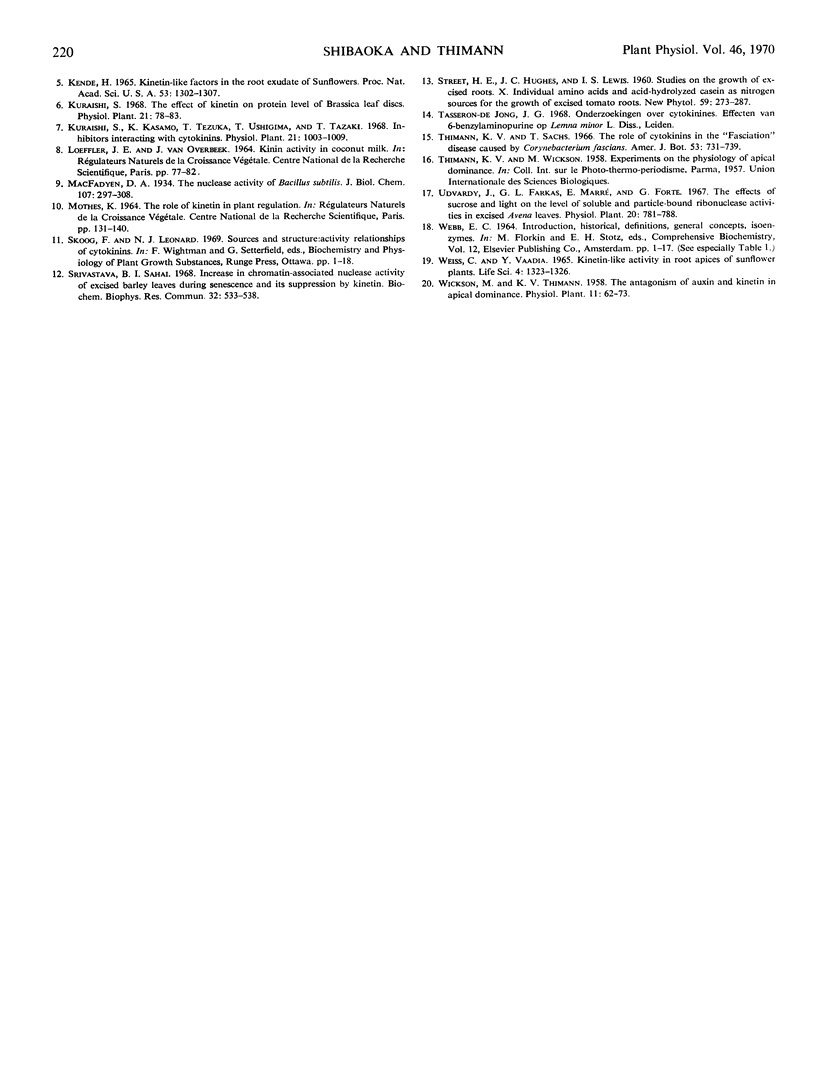
Selected References
These references are in PubMed. This may not be the complete list of references from this article.
- Kende H. KINETINLIKE FACTORS IN THE ROOT EXUDATE OF SUNFLOWERS. Proc Natl Acad Sci U S A. 1965 Jun;53(6):1302–1307. doi: 10.1073/pnas.53.6.1302. [DOI] [PMC free article] [PubMed] [Google Scholar]
- Srivastava B. I. Increase in chromatin associated nuclease ctivity of excised barley leaves during senescence and its suppression by kinetin. Biochem Biophys Res Commun. 1968 Aug 13;32(3):533–538. doi: 10.1016/0006-291x(68)90695-5. [DOI] [PubMed] [Google Scholar]
- Weiss C., Vaadia Y. Kinetin-like activity in root apices of sunflower plants. Life Sci. 1965 Jul;4(13):1323–1326. doi: 10.1016/0024-3205(65)90084-6. [DOI] [PubMed] [Google Scholar]


